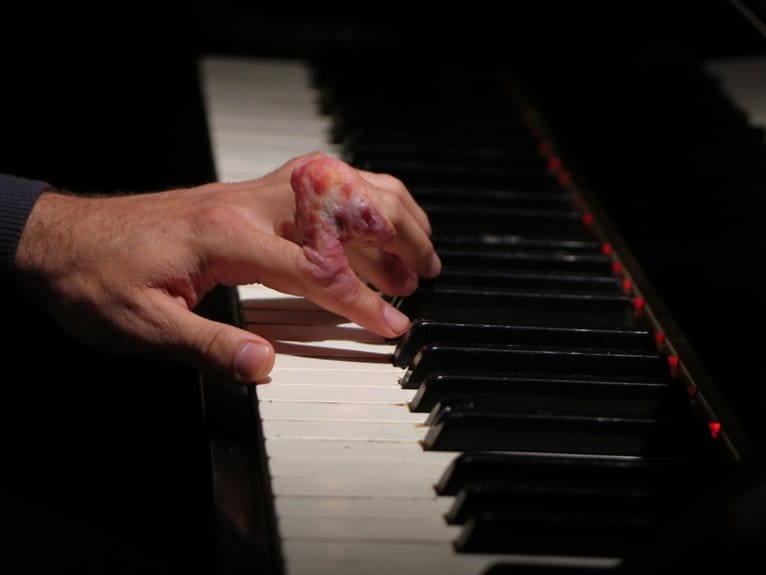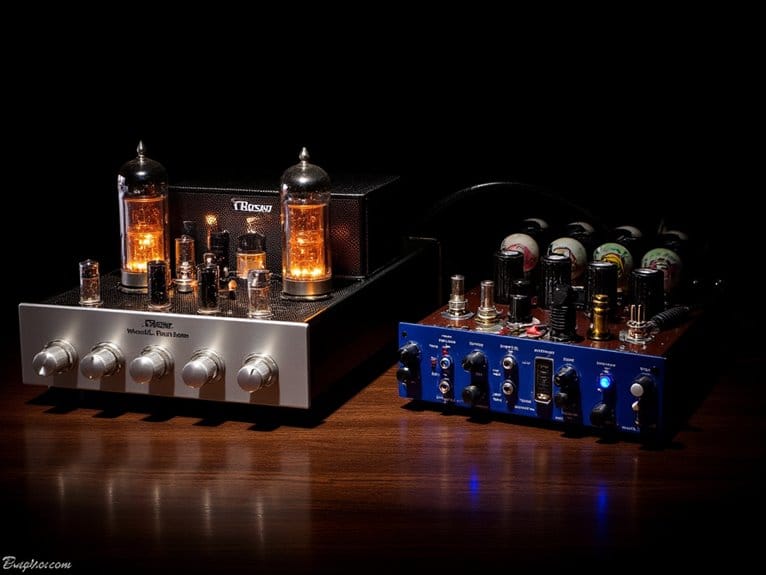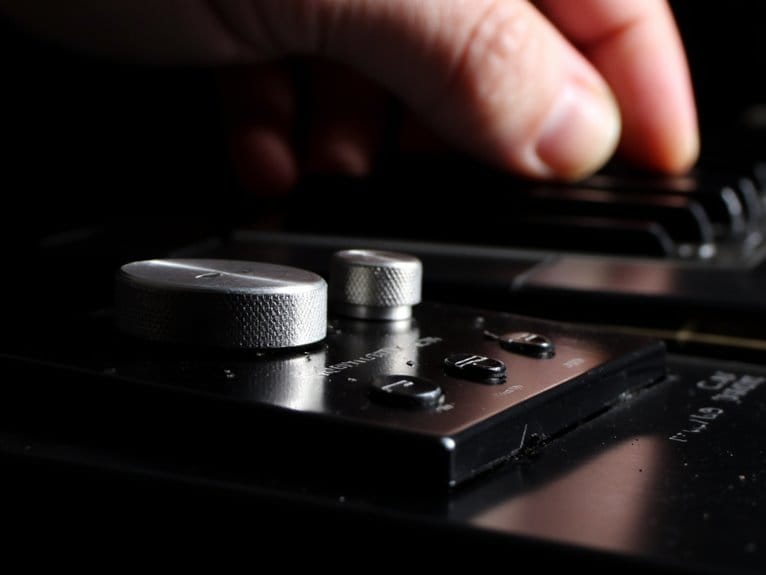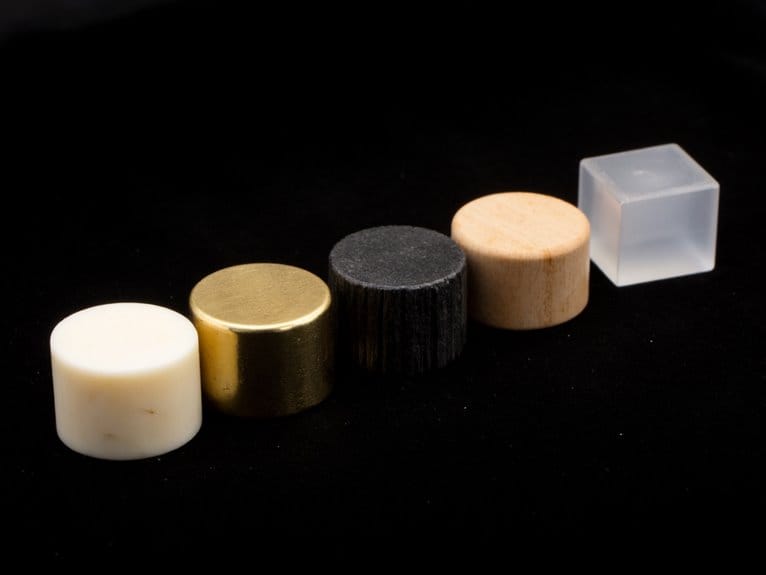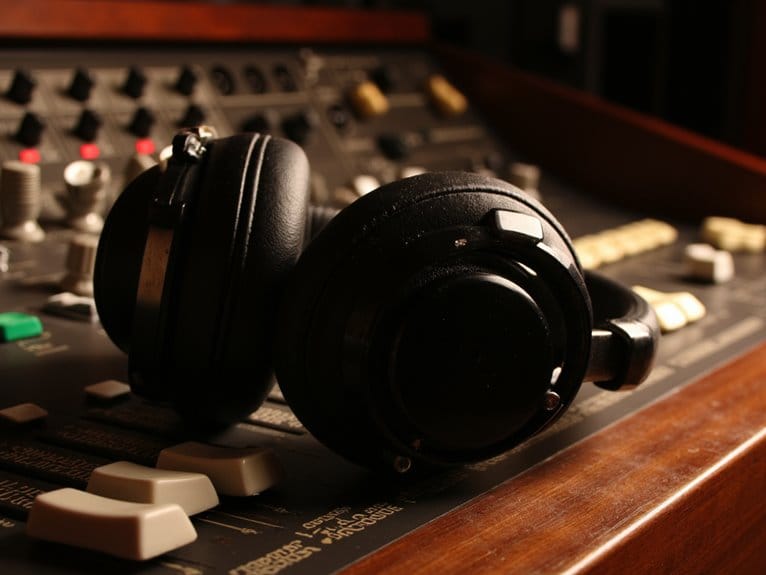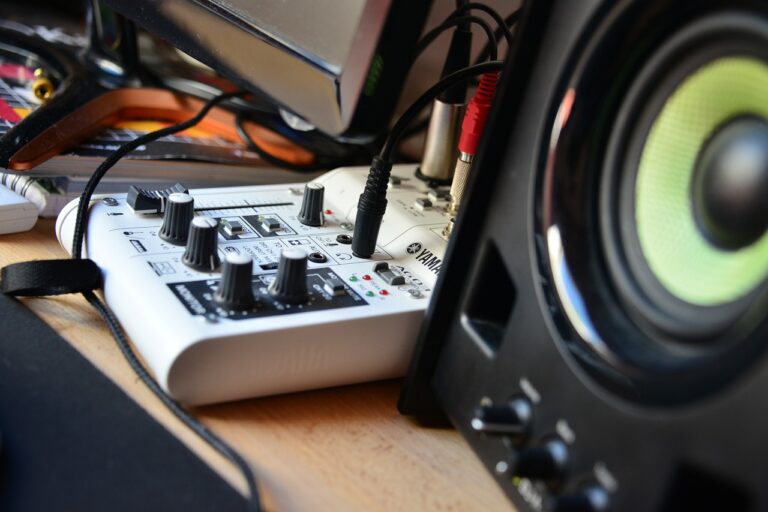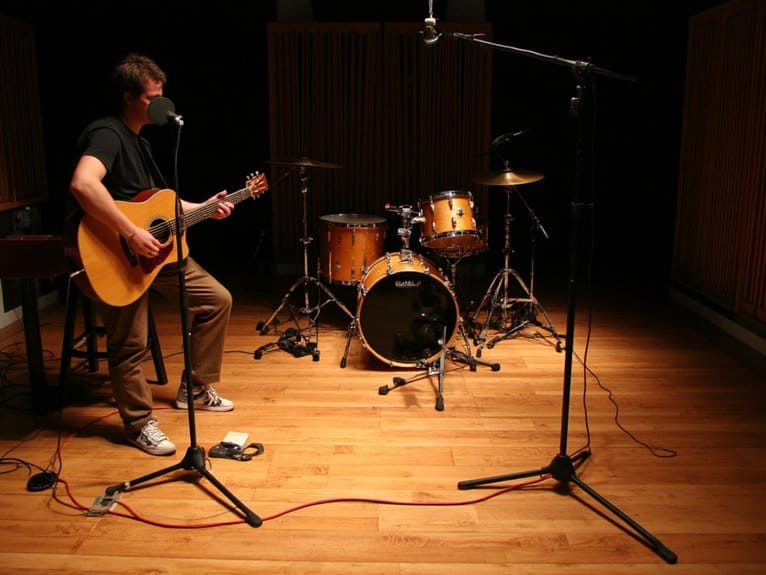What Is Trigger Finger? a Musician’s Occupational Hazard
You’ll recognize trigger finger as stenosing tenosynovitis, where your inflamed flexor tendons catch in narrowed pulleys at your finger’s base, causing that telltale clicking, locking, or catching sensation that disrupts precise musical movements. Musicians face higher risk due to repetitive motions, forceful gripping, and awkward wrist positions that create tendon sheath friction, particularly affecting your ring, middle, and thumb fingers during extended practice sessions. Early symptoms include morning stiffness and clicking sounds that worsen performance precision, though proper ergonomics, warm-ups, and treatment strategies can effectively address this occupational challenge.
We are supported by our audience. When you purchase through links on our site, we may earn an affiliate commission, at no extra cost for you. Learn more.
Notable Insights
- Trigger finger is a condition where fingers lock or catch due to inflamed tendons from repetitive motions.
- Musicians face higher risk due to repetitive finger movements, forceful gripping, and awkward wrist positions during practice.
- Early warning signs include morning stiffness, clicking sounds, and difficulty with precise finger movements during playing.
- Prevention includes proper warm-ups, ergonomic positioning, regular breaks, and maintaining good nutrition to support tendon health.
- Treatment ranges from anti-inflammatory medications and physical therapy to corticosteroid injections or minor surgical procedures.
Understanding the Mechanics and Symptoms of Stenosing Tenosynovitis
The intricate dance between your fingers and their internal mechanics becomes painfully apparent when stenosing tenosynovitis, commonly known as trigger finger, disrupts the normally seamless process of flexion and extension.
The delicate symphony of finger movement transforms into a painful struggle when trigger finger disrupts your hand’s precise mechanical choreography.
Your flexor tendons, designed to glide smoothly through precisely-sized pulleys, encounter friction when the tendon enlarges or the lining thickens, creating a stenosis that impedes movement.
This compromised tendon function manifests as clicking, popping, or complete locking at your finger’s base, particularly where it meets your palm.
The inflammatory response triggers increased fluid production within the sheath, raising pressure and worsening symptoms.
You’ll likely notice morning stiffness, tenderness, and potentially a palpable nodule along the tendon, with advanced cases causing your finger to lock in bent positions before suddenly snapping straight. Associated medical conditions like rheumatoid arthritis, gout, and diabetes can increase your susceptibility to developing trigger finger. Musicians face particularly elevated risk due to the repetitive motions inherent in their practice and performance routines.
Why Musicians Face Higher Risk for Tendon Sheath Inflammation
While I’ve spent years observing musicians in practice rooms and performance halls, what strikes me most isn’t their artistic dedication—it’s how their craft systematically subjects their hands to the perfect storm of conditions that breed trigger finger.
Your repetitive finger movements during extended practice sessions create constant tendon sheath friction, while the precision demands of your instrument require forceful gripping that increases mechanical stress beyond what most occupations demand.
Musical stress compounds when you maintain awkward wrist positions for sustained periods, and ergonomic strain from poor positioning reduces blood flow to healing tissues.
Without adequate rest between sessions, your tendon sheaths can’t recover properly, leading to persistent inflammation that progresses into stenosing tenosynovitis. The condition results in dragging pain along the affected tendons in your fingers and hands. Musicians who develop trigger finger often experience a characteristic stop-and-go movement in their fingers during performance, which can be particularly devastating for their musical careers.
Recognizing Early Warning Signs During Musical Performance
Since trigger finger develops gradually rather than appearing overnight, I’ve learned that recognizing its early warning signs during musical performance can mean the difference between simple modifications and career-threatening limitations. You’ll notice these symptoms typically worsen after periods of inactivity, improving somewhat as your musical warm ups progress and finger mobility increases throughout practice sessions.
The ring, middle, and thumb are particularly vulnerable to developing trigger finger symptoms, as these digits experience the most stress during complex musical passages and chord formations. Musicians should understand that this condition stems from tendon irritation rather than joint problems, which means the underlying tissues can heal with proper care and rest.
| Symptom Category | Early Warning Signs | Performance Impact |
|---|---|---|
| Morning Stiffness | Fingers feel locked, hard to bend initially | Difficult start to practice sessions |
| Movement Issues | Clicking, popping, or snapping sensations | Interferes with precise finger actions |
| Physical Changes | Tender nodule at finger base on palm | Worsens with pressure during playing |
| Functional Loss | Reduced dexterity, awkward movements | Impaired fine motor control |
| Progressive Nature | Symptoms fluctuate, worsen without intervention | Can lead to permanent limitations |
Ergonomic Strategies and Prevention Techniques for Instrumentalists
When it comes to preventing trigger finger as a musician, I’ve discovered that ergonomic strategies aren’t just helpful recommendations—they’re essential habits that can save your playing career from unnecessary limitations and painful interruptions.
Proper ergonomic equipment, including adjustable stands and supportive seating, creates the foundation for posture improvement that reduces upper body tension.
I recommend dedicating 5-10 minutes to warm up techniques like gentle finger rolls and wrist stretches before each practice session, followed by targeted finger exercises using grip trainers or stress balls.
Strategic activity breaks prevent cumulative overload, while stress management and nutrition strategies support tendon health. Limiting inflammatory foods and maintaining hydration optimize tissue repair, creating a thorough prevention approach. Glucosamine sulfate can help hydrate and lubricate tendons that may lack proper hydration from repetitive use. Additionally, quality equipment with proper impedance matching ensures optimal performance without forcing unnecessary tension during extended playing sessions. Modern recording setups with zero-latency monitoring help musicians perform more naturally without the distraction of audio delays that can cause compensatory tension. If persistent pain develops despite preventive measures, consulting with hand therapists provides specialized guidance for managing symptoms and maintaining your musical abilities.
Treatment Options From Conservative Care to Surgical Intervention
As trigger finger symptoms progress beyond what ergonomic adjustments and prevention techniques can manage, I’ve found that understanding the full spectrum of treatment options—from conservative approaches to surgical interventions—becomes essential for making informed decisions about your musical future.
Effective medication management typically begins with NSAIDs like ibuprofen, which reduce inflammation temporarily but don’t address underlying mechanical issues. Rehabilitation strategies encompass physical therapy with customized exercises, splinting to immobilize affected fingers, and targeted stretching routines that maintain range of motion.
For persistent cases, treatment escalates through:
- Corticosteroid injections that reduce tendon sheath inflammation, often providing relief lasting over one year
- Percutaneous needle release procedures using ultrasound guidance for minimally invasive intervention
- Open surgical release with high long-term success rates when conservative treatments fail
When surgical intervention becomes necessary, the procedure can typically be performed awake with local anesthetic in an office setting, making it more convenient for musicians with busy performance schedules. Each option requires careful consideration of your performance demands and recovery timeline. The severity and duration of symptoms will ultimately dictate which treatment approach your healthcare provider recommends for your specific case.
On a final note
If you’re experiencing clicking, stiffness, or catching in your fingers during practice, don’t ignore these warning signs—early intervention can prevent permanent damage to your playing career. I’ve seen too many talented musicians push through pain only to face months of recovery later. By implementing proper ergonomics, taking regular breaks, and seeking treatment promptly, you’ll protect your hands while maintaining the musical passion that drives you forward.

